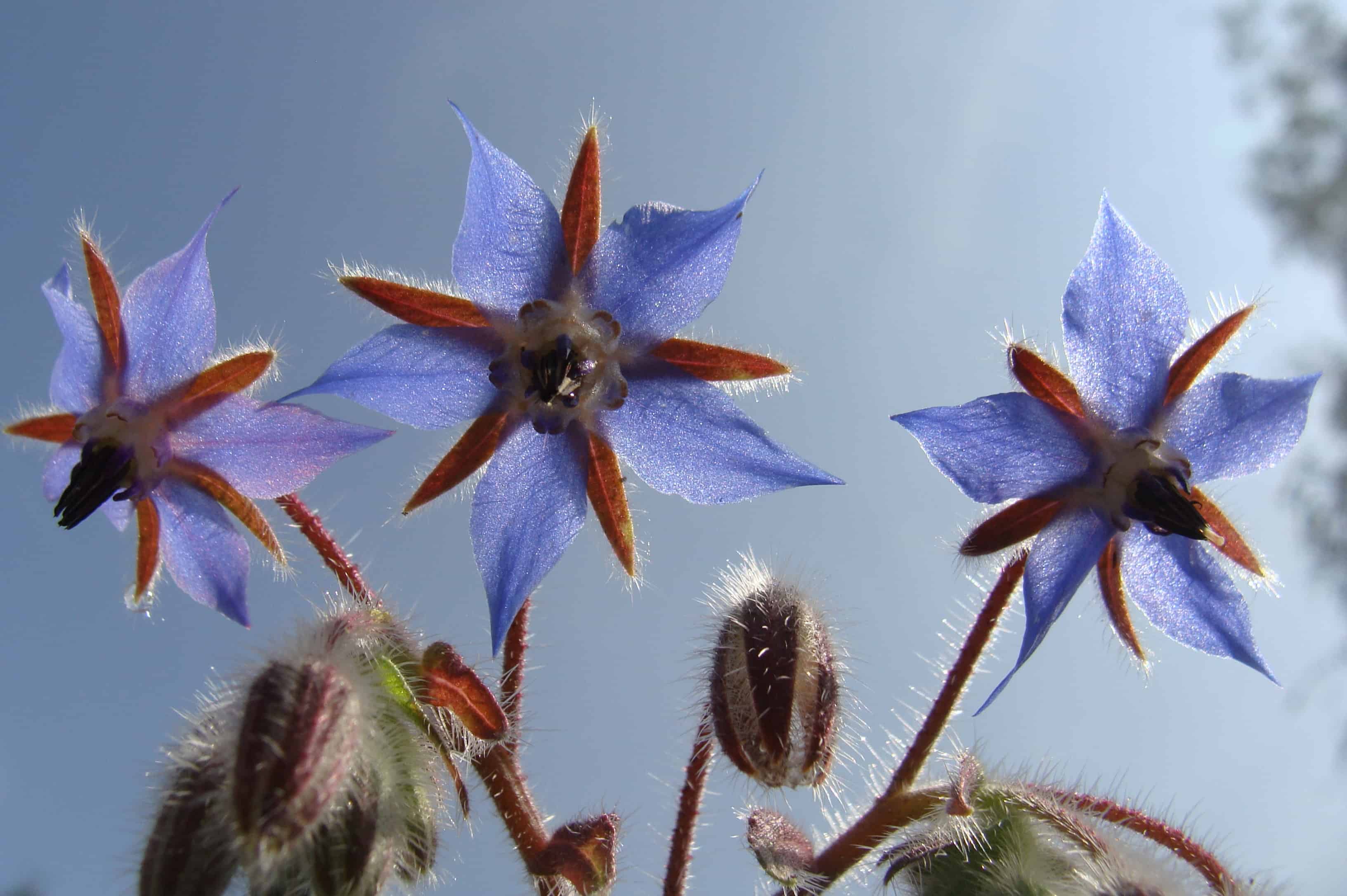
Borage, also known as starflower, is a fascinating plant with a rich history and many uses. Ever wondered why this herb has been cherished for centuries? Borage boasts vibrant blue, star-shaped flowers that not only brighten gardens but also attract pollinators like bees. This plant isn't just a pretty face; it's packed with nutrients. Borage leaves and flowers are edible, often used in salads or as garnishes. Its seeds produce oil rich in gamma-linolenic acid (GLA), beneficial for skin health. Historically, borage was believed to bring courage and comfort. Curious about more intriguing facts? Let's dive into the world of borage and uncover its secrets!
Key Takeaways:
- Borage, also known as starflower, is a versatile herb with edible flowers and rich in nutrients like vitamins A and C, making it a great addition to salads and skincare products.
- Borage is easy to grow, self-seeding, and a great companion plant for your garden. Its mild cucumber flavor and pest resistance make it a low-maintenance delight for both humans and pollinators.
What is Borage?
Borage, also known as starflower, is a versatile herb with a rich history. It's known for its vibrant blue flowers and medicinal properties. Let's dive into some fascinating facts about this unique plant.
-
Scientific Name: Borage's scientific name is Borago officinalis. This name reflects its official status in herbal medicine.
-
Origin: Native to the Mediterranean region, borage has spread across Europe, North America, and other temperate areas.
-
Appearance: The plant boasts bright blue, star-shaped flowers and hairy leaves. These distinctive features make it easy to identify.
-
Growth: Borage grows quickly, often reaching heights of up to 3 feet. It thrives in well-drained soil and full sunlight.
-
Edible Flowers: The flowers are edible and often used to garnish salads, desserts, and drinks. They add a splash of color and a mild cucumber flavor.
Historical Significance of Borage
Borage has been valued for centuries, not just for its beauty but also for its various uses. Here are some historical facts about this remarkable plant.
-
Ancient Use: Ancient Greeks and Romans believed borage could drive away sorrow and boost courage. They often added it to wine.
-
Medieval Medicine: In medieval Europe, borage was a common remedy for ailments like fever, jaundice, and kidney problems.
-
Symbolism: Borage symbolizes courage and bravery. Knights in the Middle Ages would often wear it before going into battle.
Nutritional and Medicinal Benefits
Borage isn't just pretty; it's packed with nutrients and medicinal properties. Here are some facts about its health benefits.
-
Rich in Nutrients: Borage leaves and flowers are rich in vitamins A and C, iron, calcium, and potassium.
-
Gamma-Linolenic Acid (GLA): Borage seeds are a significant source of GLA, an essential fatty acid known for its anti-inflammatory properties.
-
Skin Health: Borage oil is often used in skincare products to treat conditions like eczema and dermatitis due to its moisturizing and anti-inflammatory effects.
-
Hormonal Balance: GLA in borage oil can help balance hormones, making it beneficial for women experiencing PMS or menopause symptoms.
Culinary Uses of Borage
Borage isn't just for medicine; it's also a culinary delight. Here are some interesting culinary facts about borage.
-
Cucumber Flavor: The leaves and flowers have a mild cucumber flavor, making them a refreshing addition to salads and beverages.
-
Herbal Tea: Borage leaves can be brewed into a soothing herbal tea, often used to relieve stress and anxiety.
-
Borage Honey: Bees love borage flowers, and the honey produced from borage nectar is highly prized for its unique flavor.
Growing and Caring for Borage
Interested in growing borage in your garden? Here are some essential facts about cultivating this herb.
-
Easy to Grow: Borage is a hardy plant that can grow in various soil types, though it prefers well-drained soil and full sun.
-
Self-Seeding: Once planted, borage often self-seeds, meaning it can come back year after year without much effort.
-
Companion Plant: Borage is an excellent companion plant for tomatoes, strawberries, and squash. It attracts pollinators and deters pests.
-
Pest Resistance: The plant is relatively pest-resistant, making it a low-maintenance addition to any garden.
-
Harvesting: Harvest borage leaves and flowers in the morning when their flavor is most potent. Use fresh or dry them for later use.
Final Thoughts on Borage
Borage, with its vibrant blue flowers and medicinal properties, is more than just a pretty plant. Known for its anti-inflammatory benefits, it’s been used in traditional medicine for centuries. The plant’s edible leaves and flowers add a unique flavor to dishes, making it a favorite among chefs and home cooks alike. Rich in nutrients, borage supports overall health and wellness. Its oil, packed with gamma-linolenic acid, is a popular supplement for skin health. Gardeners love borage for its ability to attract pollinators, enhancing the growth of nearby plants. Whether you’re interested in its culinary uses, health benefits, or gardening perks, borage is a versatile and valuable addition to any garden or kitchen. Embrace the many advantages of this remarkable plant and enjoy all it has to offer.
Frequently Asked Questions
Was this page helpful?
Our commitment to delivering trustworthy and engaging content is at the heart of what we do. Each fact on our site is contributed by real users like you, bringing a wealth of diverse insights and information. To ensure the highest standards of accuracy and reliability, our dedicated editors meticulously review each submission. This process guarantees that the facts we share are not only fascinating but also credible. Trust in our commitment to quality and authenticity as you explore and learn with us.


